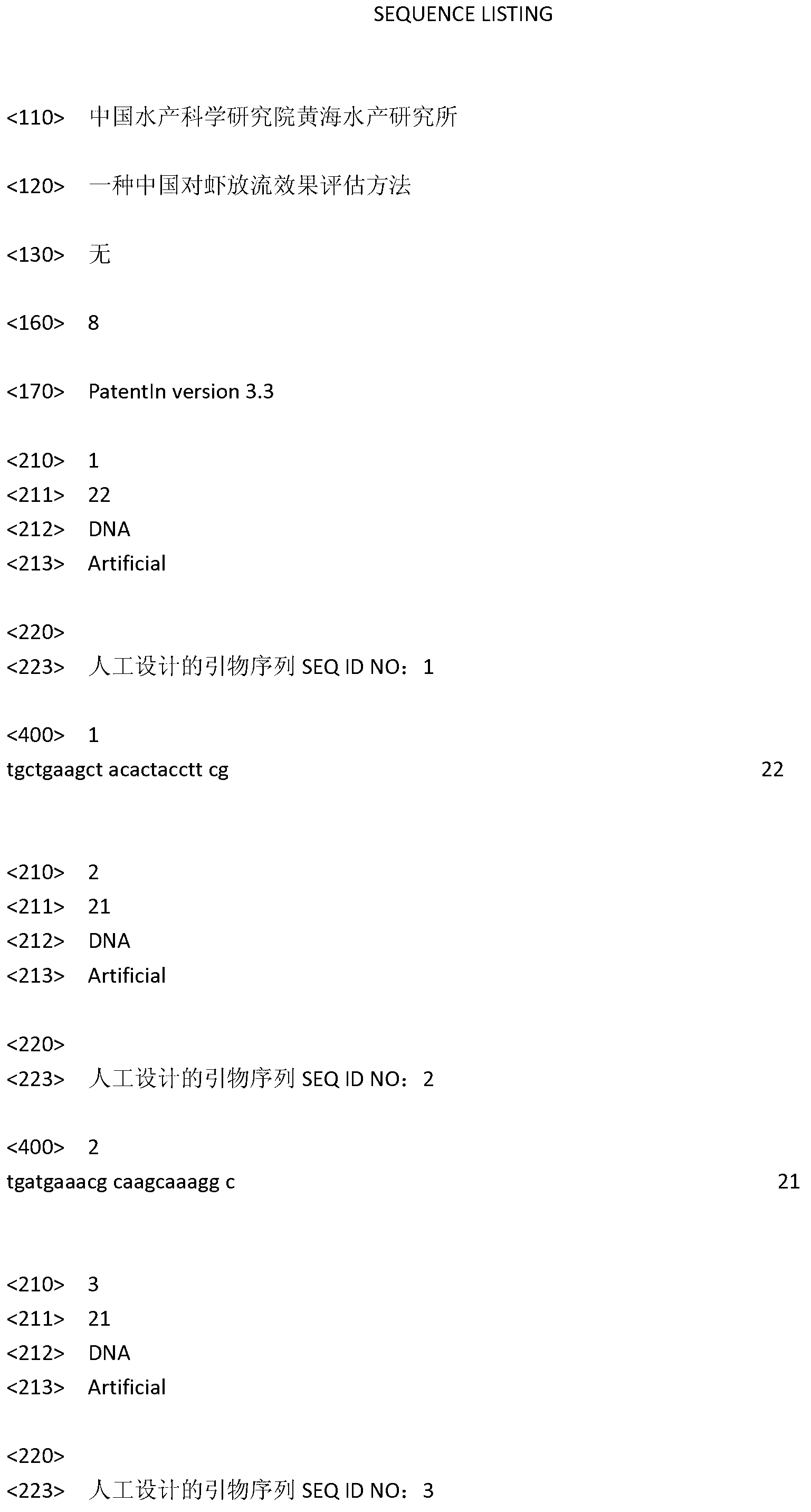Chinese prawn releasing effect assessment method
A technology of Chinese prawns and primer pairs, applied in biochemical equipment and methods, microbial determination/inspection, climate change adaptation, etc. problem, to achieve the effect of accurate discharge effect and obvious survival/death advantage
- Summary
- Abstract
- Description
- Claims
- Application Information
AI Technical Summary
Problems solved by technology
Method used
Image
Examples
Embodiment 1
[0017] Example 1: Establishment of internal standard population, release population and evaluation method
[0018] 1. Acquisition of Specific Molecular Fingerprints of Chinese Penaeus Shrimp Family
[0019] The offspring bred by each pair of parents have a consistent DNA molecular fingerprint, which is unique to the individual / family and is different from other families and individuals and lasts a lifetime. Using this specific molecular fingerprint and referring to the parental genotype, a specific individual / family can be accurately identified from a mixed population. The microsatellites of Penaeus chinensis are widely distributed in the genome, and the level of genetic variation is rich, which has the characteristics of genetic selection neutrality. The molecular fingerprint formed by the combination of different genotypes of microsatellite molecular markers is an ideal tool for individual / family identification. Taking the Chinese prawn microsatellite loci independently de...
Embodiment 2
[0028] Example 2: Small scale testing
[0029]In 2010, a simulation experiment of Chinese prawn molecular marker release was carried out at the Aoshanwei Experimental Base of the Yellow Sea Fisheries Research Institute. In May of that year, when the individual prawns reached about 3 cm in size, two Chinese prawn sibling families were randomly selected, and 100 individuals were randomly selected from each family for fluorescent labeling, and then mixed with 1988 prawn individuals of the same size. In mid-August of that year, after all the individuals were collected, family members were identified and counted according to the information of individual fluorescent markers. Among them, 93 individuals with red fluorescent markers were detected, with a survival rate of 93%; and 81 individuals with blue fluorescent markers, with a survival rate of 81%. ; There were 1722 unmarked individuals, and the survival rate was 86.62%. After two and a half months of simulated release, the prop...
Embodiment 3
[0030] Example 3: Large-Scale Detection
[0031] In the autumn of the first year, individuals with large size, complete limbs, no mating and no obvious symptoms were selected from 200 sea-caught prawns for isolation and quarantine. The swimming appendages of prawns were taken for quantitative PCR detection of WSSV in vivo, and the individuals who did not carry WSSV virus after quarantine were paired with male and female shrimps one by one. From them, 30 mating female shrimps were selected and artificially overwintered; the mating male shrimps were completed and stored at -70°C for later use. In the spring of the following year, 3 female shrimps were selected to adopt standardized family breeding procedures, and the seedlings were cultivated as internal standard populations. Combined with the breeding and production technology of non-specific pathogenic seedlings, the seedlings of other sea-caught Penaeus sinensis populations were simultaneously cultivated separately. Each fam...
PUM
 Login to View More
Login to View More Abstract
Description
Claims
Application Information
 Login to View More
Login to View More - R&D
- Intellectual Property
- Life Sciences
- Materials
- Tech Scout
- Unparalleled Data Quality
- Higher Quality Content
- 60% Fewer Hallucinations
Browse by: Latest US Patents, China's latest patents, Technical Efficacy Thesaurus, Application Domain, Technology Topic, Popular Technical Reports.
© 2025 PatSnap. All rights reserved.Legal|Privacy policy|Modern Slavery Act Transparency Statement|Sitemap|About US| Contact US: help@patsnap.com



